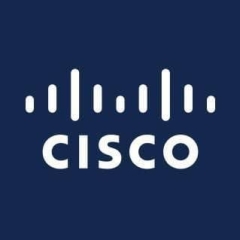What is our primary use case?
We primarily use the solution for user authentication and wireless segmentation of users for actual radius purposes.
What is most valuable?
The actual radius is the most valuable aspect of the solution. We need to have a centric solution either on MarTech X and for the wireless user authentication. We were mainly on Cisco and we continue to use them. However, this is the time period for a refresh as the five-year lifespan is completed. We may look for other options.
Technical support is okay.
What needs improvement?
The solution is not so user-friendly. It's very difficult to navigate through different manuals. The documentation should be simplified so that it is easier to understand.
It would take time for a beginner to understand and familiarize themselves with the solution. There's a bit of a learning curve.
Cisco ISE is not very stable. They could work on that aspect.
We'd like the pricing to be better.
The product is not easily scalable.
Currently, if you want to do something with authentication, you need to have an additional document agent, however, these are short on all Microsoft endpoints. We then need to come up with some alternate options so that I don't have to modify any native applications on it. By default, Windows should be able to support and onboard the devices. Right now I need to have a Cisco AnyConnect as an agent to be deployed for authentication.
For how long have I used the solution?
I've been using the solution for over five years at this point. It's been a while.
What do I think about the stability of the solution?
The stability of the solution needs to be improved. It's not ideal. It's lacking overall. If we have five or six items activated, the box shakes and we're scared to touch anything. When we do have to reconfigure things, it's a nightmare as it can go down and it can take us a day or two to sort things out.
What do I think about the scalability of the solution?
In terms of scalability, it needs to be reactivated, which means that I need to add more nodes. It's got its own design limitations. We had only a two-node deployment in it. We need to add more hardware and we need to reduce so many things. It's not an easy option to scale this hardware. Scaling, in general, is very difficult.
We have roughly 9,000 users on this product currently.
How are customer service and technical support?
Technical support is fine. However, we may need to depend on support to resolve some of our many issues. We need to spend an enormous amount of time with them and to explain so much stuff. It would be easier if we could troubleshoot the issue ourselves or if the solution was more reliable.
Which solution did I use previously and why did I switch?
I don't know about other alternative products. I don't have any experience with other alternative products. I've only ever used Cisco ISE.
How was the initial setup?
The solution's initial setup can be a bit complex as there are so many features that are available. It all depends, however, upon which one you want to activate. In our case, we have five or six activated and the box always shakes. It's not stable. So my colleagues are always afraid to touch the box. If it is working well and good, you don't touch it, and we don't reconfigure it. In cases where we encounter any issues, it's a nightmare and we need to spend a minimum of twenty-four to forty-eight hours to recover everything.
What's my experience with pricing, setup cost, and licensing?
We pay a fee based on a subscription model.
The pricing could always be better.
Which other solutions did I evaluate?
I've been looking at evaluating Aruba's Clearpass as a potential replacement option for this solution. I haven't gotten too far into my research, however. I'm looking for a solution that's scalable and easy to use.
What other advice do I have?
My advice to Cisco would be to simplify as much as possible so that a normal IT guy can understand the CCD and set it up. If they can simplify the manuals, navigation, and documentation, it would be nice. It will always be difficult for a beginner, however, to, rearrange or design the network.
I would rate the solution five out of ten.
Which deployment model are you using for this solution?
On-premises
Disclosure: My company has a business relationship with this vendor other than being a customer: Partner




















